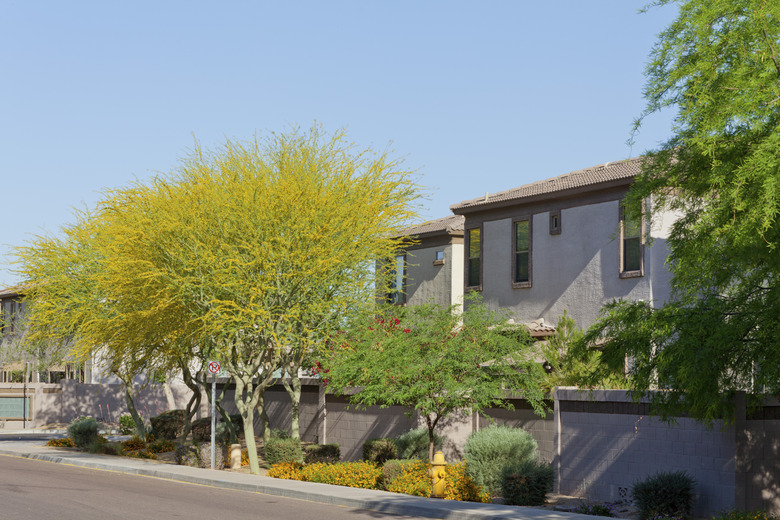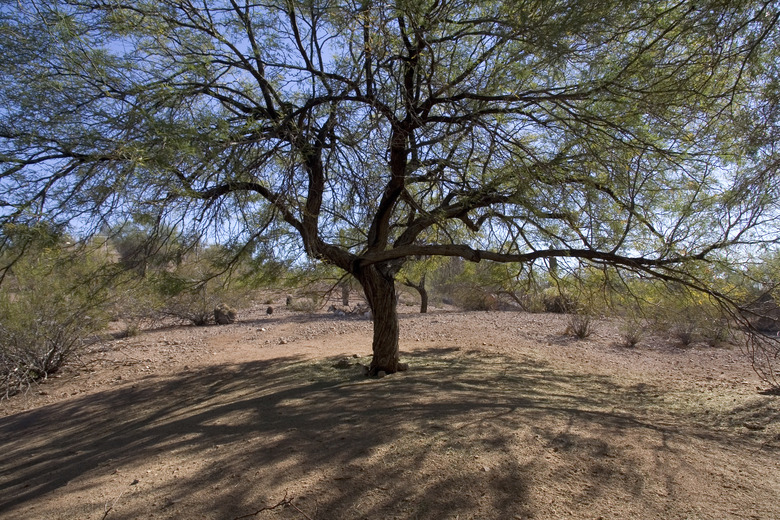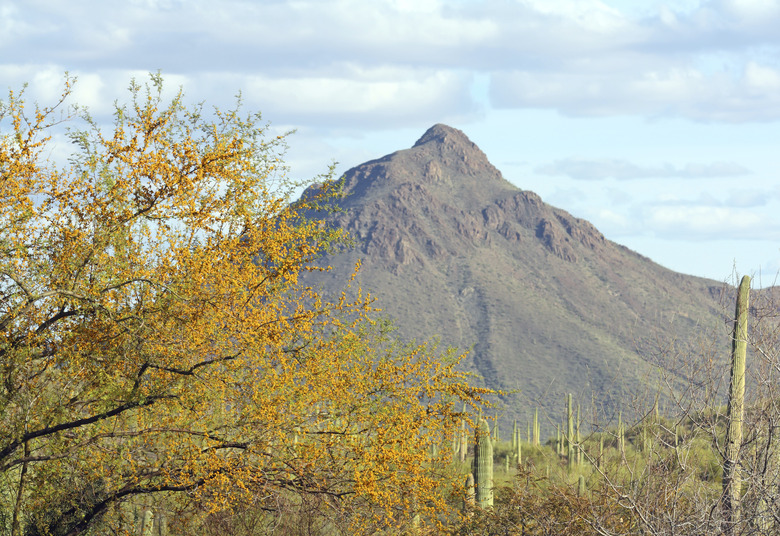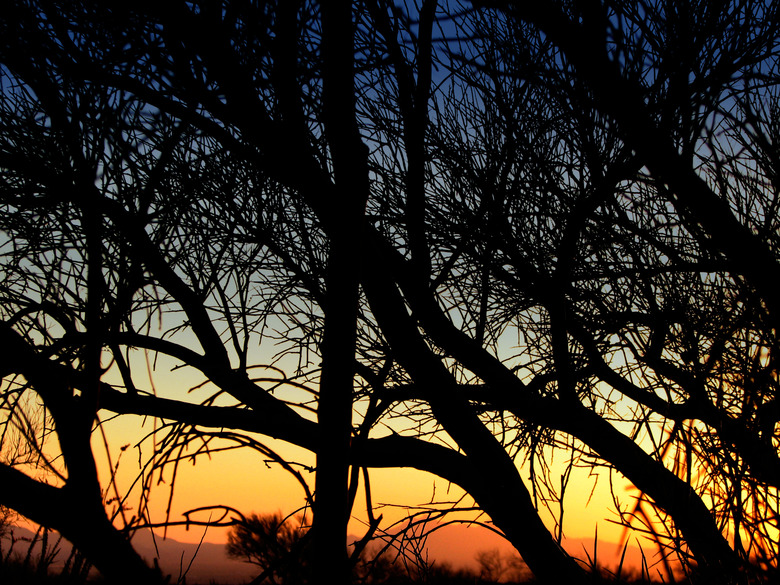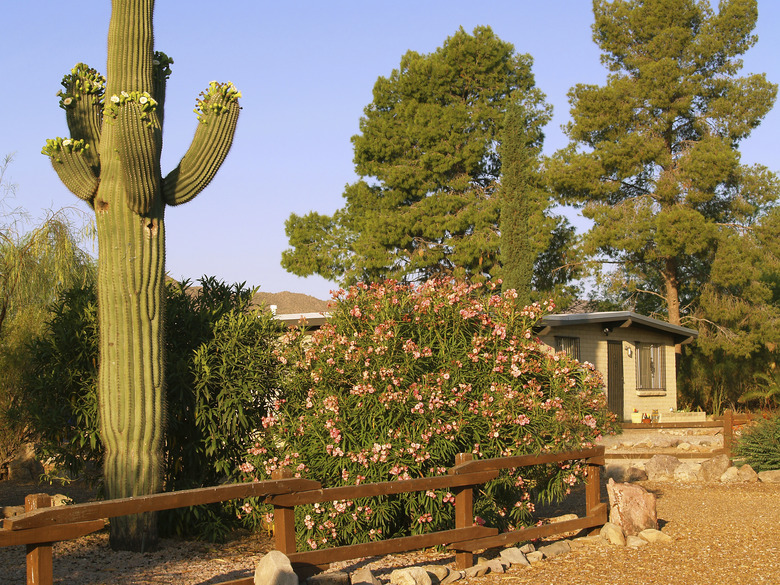The Best Desert Shade Trees In Arizona
Arizona summers can be brutally hot, with temperatures climbing at least as high as 115 degrees. Not only is this excessive heat physically exhausting (and even dangerous at times); it can also be hard on the air conditioner, as well as the wallet. Homeowners plant shade trees to cool down their homes and lower AC costs. The Arizona Community Tree Council recommends planting native trees to eliminate the risk of invasive plant problems and to provide an ideal habitat for native wildlife.
Mesquite
There are several mesquite tree varieties that do well in Arizona soil and sun. The native mesquite (Prosopis velutina) is a native deciduous Arizona tree that grows to between 25 and 40 feet tall. When the tree blooms, it produces cream-colored flowers.
Most mesquites can provide at least filtered shade; dense trees can produce full shade. The Texas mesquite (Prosopis glandulosa) also grows well in the Arizona desert.
Acacia
Although acacia trees are not native to Arizona, they do well in the state's desert environment and are not invasive. The sweet acacia (Acacia smalii), with its slender, fern-like leaves and vibrant, aromatic flowers, is quite common in Arizona. The Arizona Community Tree Council lists sweet acacia as a tree that attracts Arizona wildlife. Other acacia varieties include weeping acacia (Acacia salicina) and shoestring acacia (Acacia stenophylla). Acacia trees provide filtered shade.
Palo Verde
Both the blue palo verde (Cercidium floridum) and the foothills palo verde (Cercidium microphyllum) trees are native to Arizona. The blue palo verde is a commonly seen deciduous tree, and can be distinguished by its smooth bluish-green bark and beautiful yellow flowers.
The foothills palo verde tree is a bit smaller, reaching a maximum height of 20 feet. The tree has very small leaves and curved trunks.
Both kinds of palo verde trees require full sun and provide filtered shade.These trees are frequently used for golf course and street landscaping.
Desert Willow
The desert willow (Chilopsis linearis) is a native tree with stunning flowers, which provides filtered to dense shade. The trumpet-shaped purple and pink flowers, which attract hummingbirds, bloom in spring and last until the fall. Desert willow trees require full sun can reach a height of 30 feet. They are appropriate for desert or traditional lawn landscapes.
